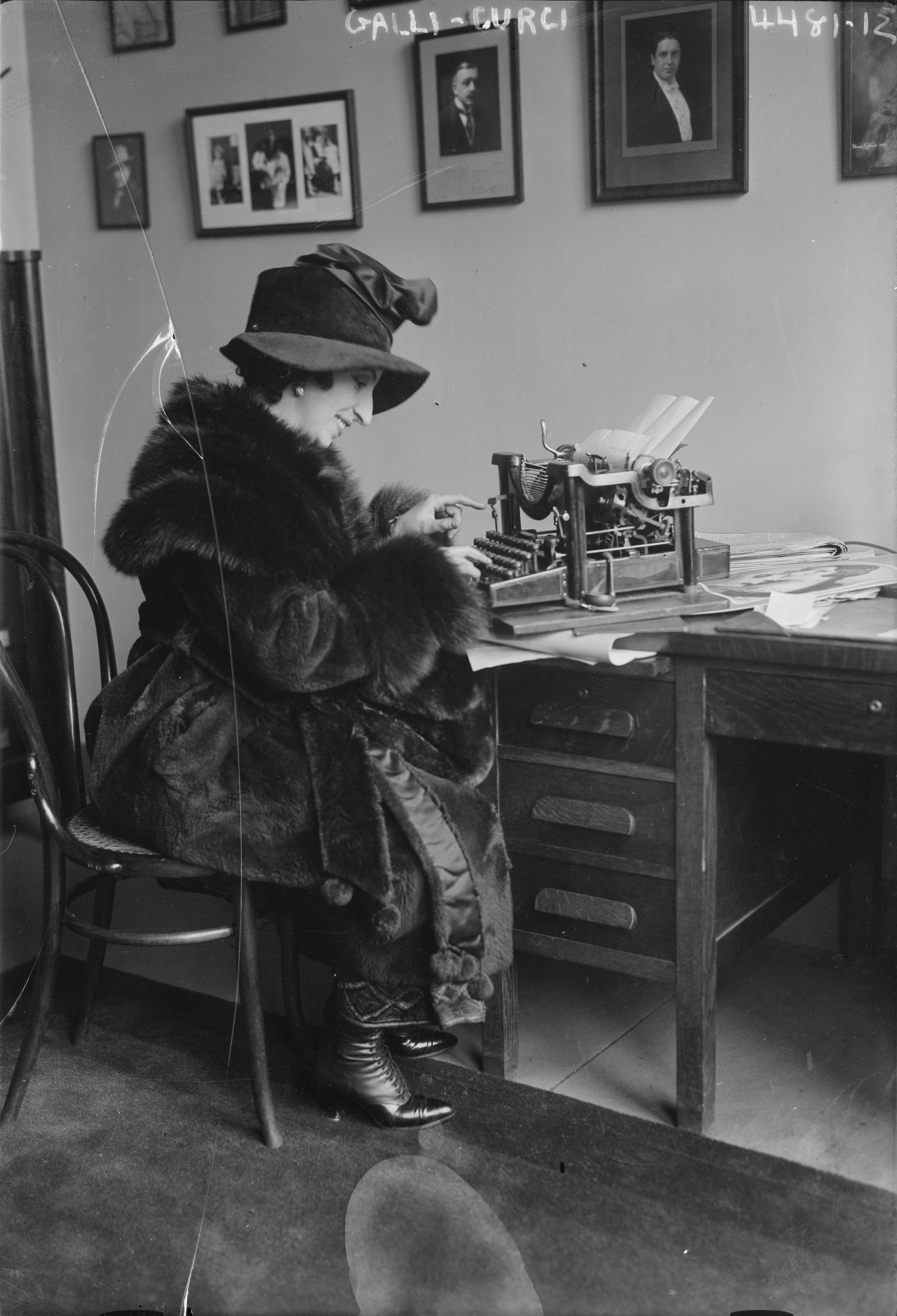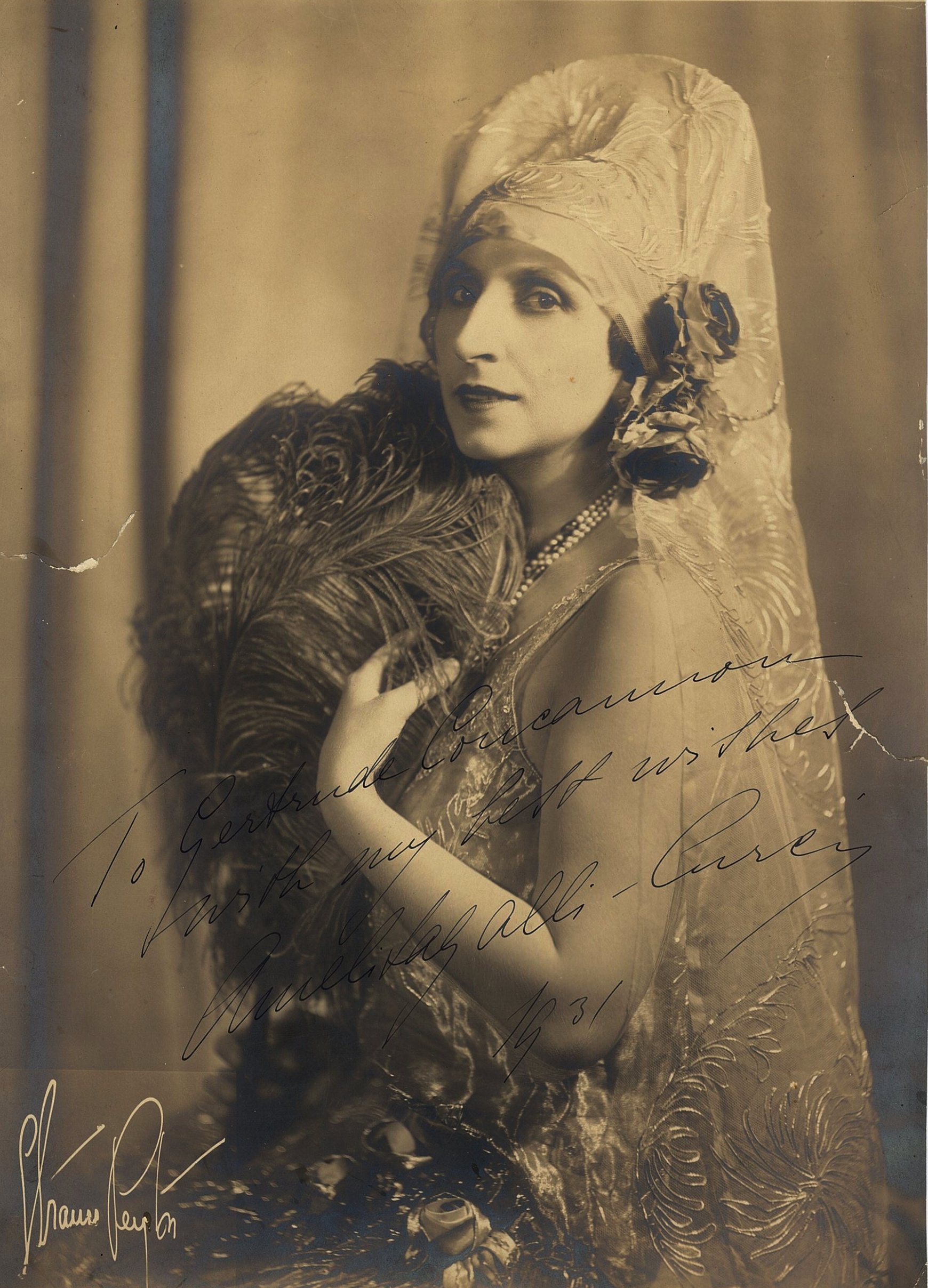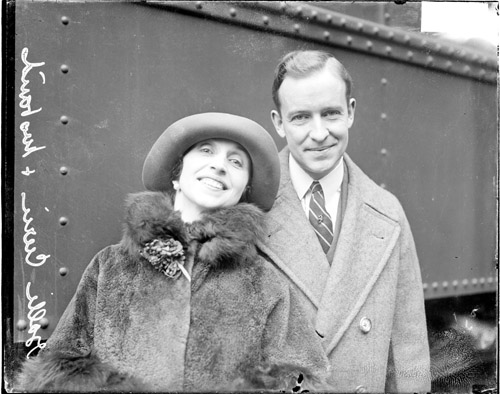1. Early life and background
Amelita Galli-Curci was born Amelita Galli into an upper-middle-class Italian family with Spanish heritage in Milan, Italy. Her early musical inclinations were strongly influenced by her family, particularly her grandmother, who inspired her to pursue singing. The renowned operatic composer Pietro Mascagni also recognized her vocal talent and encouraged her ambitions to become a singer.
1.1. Early musical education
Galli-Curci began her formal musical education by studying piano at the Milan Conservatory. She demonstrated exceptional talent, winning a gold medal for her piano performance. By the age of 16, her proficiency was such that she was offered a professorship in piano at the conservatory. She graduated from the Milan Conservatory in 1903, achieving first place in her class.
1.2. Self-training and vocal development
Despite her formal training in piano, Galli-Curci largely chose to develop her vocal technique through self-training during the initial phase of her career. Her method involved diligently listening to other sopranos, studying old singing-method books, and practicing piano exercises by using her voice instead of a keyboard. This unique approach allowed her to hone her distinct vocal style. Later in her career, during the 1920s and 1930s, she received coaching from Estelle Liebling in New York City.
2. Career
Amelita Galli-Curci's professional musical career spanned several decades, marked by significant debuts, international tours, and a prolific recording output that solidified her status as a global operatic star.
2.1. Debut and early career in Italy
Galli-Curci made her operatic debut in 1906 in Trani, Italy, performing the role of Gilda in Giuseppe Verdi's Rigoletto. She quickly gained widespread acclaim across Italy for the remarkable sweetness and agility of her voice, coupled with her captivating musical interpretations. Many critics of the time viewed her as a refreshing contrast to the prevailing trend of "squally," verismo-oriented sopranos who were prominent in Italian opera houses. She also performed the role of Gilda in Rome in 1908.
2.2. International tours and collaborations
Throughout her career, Galli-Curci embarked on extensive international tours, performing in numerous countries across Europe, Russia, and South America. A notable collaboration occurred in 1915 when she sang two performances of Lucia di Lammermoor with the legendary tenor Enrico Caruso in Buenos Aires. These were her only operatic appearances with Caruso, though they later performed together in concerts and made a few joint recordings. Galli-Curci and Caruso also served as godparents for the son of Sicilian tenor Giulio Crimi.
Her touring schedule included a significant concert tour of Great Britain in 1924, where she appeared in 20 cities, though she never performed in an opera there. The following year, she undertook a tour of Australia. In 1935, she visited Japan as part of a world tour with her husband, where she also held concerts.
2.3. United States career
Galli-Curci first arrived in the United States in the autumn of 1916, largely unknown to American audiences. Her stay was initially intended to be brief. However, her American debut as Gilda in Rigoletto in Chicago on 18 November 1916, which coincided with her 34th birthday, was met with overwhelming and enthusiastic acclaim. This reception led her to accept an offer to extend her association with the Chicago Opera Association, where she continued to perform until the end of the 1924 season.
On 14 November 1921, while still under contract with the Chicago Opera, Galli-Curci made her highly anticipated debut at the Metropolitan Opera in New York City. She performed the role of Violetta in La Traviata, opposite tenor Beniamino Gigli as Alfredo. She was one of the few singers of that era to hold contracts with both the Chicago Opera and the Metropolitan Opera simultaneously. Galli-Curci remained a prominent figure at the Met until her retirement from the operatic stage nine years later. Her repertoire at the Metropolitan Opera included roles such as Rosina in The Barber of Seville, the Queen of Shemakha in The Golden Cockerel, Juliet in Roméo et Juliette, and Dinorah in Dinorah.

In 1922, Galli-Curci commissioned the construction of a country estate named "Sul Monte" in Highmount, New York. She spent her summers there for several years before selling the property in 1937. A theater erected in the nearby village of Margaretville, New York was named in her honor, and Galli-Curci reciprocated by performing there on its opening night. In 2010, "Sul Monte" was listed on the National Register of Historic Places.
2.4. Recording career
In 1916, a few weeks before her American debut, Galli-Curci signed a significant recording contract with the Victor Talking Machine Company. She recorded exclusively for Victor until 1930, producing a substantial body of work that captured her unique vocal artistry. These recordings played a crucial role in disseminating her fame and making her voice accessible to a broader audience, contributing significantly to her status as a popular recording artist.

3. Vocal decline and retirement
By January 1930, Galli-Curci retired from the operatic stage, citing weariness with opera house politics and a conviction that opera was a dying art form. She chose to concentrate instead on concert performances. For several years leading up to this decision, she had been plagued by throat problems and an uncertain pitching of her highest notes.
3.1. Research on vocal decline
In 1935, Galli-Curci underwent surgery for the removal of a thyroid goiter. Great care was taken during the procedure, which was performed under local anesthesia. However, it was widely believed that her voice suffered following the surgery, specifically that a nerve to her larynx, the external branch of the superior laryngeal nerve, had been damaged. This damage was thought to have resulted in the loss of her ability to sing high pitches, and this nerve subsequently became known as the "nerve of Galli-Curci."
However, later research challenged this widely held belief. In 2001, researchers Crookes and Recaberen conducted a study that re-examined contemporary press reviews from after the surgery, interviewed colleagues and relatives of the surgeon, and compared Galli-Curci's career trajectory with that of other singers. Their findings suggested that her vocal decline was most likely not caused by a surgical injury. Other researchers, such as Marchese-Ragona et al., have argued that while tracheal compression caused by the goiter may have contributed to the early end of her career as a coloratura soprano, it was indeed nerve damage sustained during the surgery that prevented her from prolonging her career as a lyric or dramatic soprano.
3.2. Return to opera and final retirement
On 24 November 1936, at the age of 54, Galli-Curci made an ill-advised return to opera, appearing in a single performance as Mimi in La bohème in Chicago. It became painfully clear that her best singing days were behind her. After another year of recitals, she went into complete retirement from public performance. She spent her later years living in California, dedicating much of her time to painting and privately teaching singing until shortly before her death. Among her students was soprano Jean Fenn.
4. Personal life
Amelita Galli-Curci's personal life included two marriages and a notable engagement with spiritual practices.
4.1. Marriages
In 1908, Amelita Galli married an Italian nobleman and painter, the Marchese Luigi Curci. She adopted his surname, creating the double surname "Galli-Curci," which she continued to use as her stage name throughout her career. Their marriage ended in divorce in 1920. The Marchese Curci subsequently petitioned the papal council in Rome for an annulment of the marriage in 1922. In 1921, Galli-Curci married her accompanist, Homer Samuels. Their marriage lasted until Samuels' death in 1956.

4.2. Spiritual interests and affiliations
Galli-Curci was a dedicated student of the Indian meditation and yoga teacher Paramahansa Yogananda. Her spiritual interests led her to contribute the foreword to Yogananda's 1929 book, Whispers from Eternity.
4.3. Residences and honors
Beyond her country estate "Sul Monte" in Highmount, New York, a theater in the nearby village of Margaretville, New York was named in her honor. She performed there on its opening night.
5. Death
Amelita Galli-Curci passed away from emphysema in La Jolla, California, on 26 November 1963, at the age of 81.
6. Legacy and cultural impact
Amelita Galli-Curci left a significant and enduring legacy in the world of music and culture, primarily through her extensive recordings and the lasting impression of her unique vocal artistry.
6.1. Recorded legacy and critical assessment
Galli-Curci's voice continues to be accessible through her original 78-rpm records, which have been reissued on LP and CD formats. Her recorded legacy provides a crucial insight into her vocal technique and artistry. Opera commentator Michael Scott, in volume 2 of The Record of Singing (1979), offered a critical assessment, comparing her unfavorably as a vocal technician to earlier coloratura sopranos such as Nellie Melba and Luisa Tetrazzini. However, Scott also acknowledged the unique beauty of her voice and the ongoing lyrical appeal of her charming singing. Her light voice technique was generally well-regarded.
6.2. Cultural references and honors
Galli-Curci's contributions to the recording industry are recognized with a star on the Hollywood Walk of Fame, located at 6121 Hollywood Boulevard. Her musical presence has also extended into popular culture. In Studio Ghibli's animated film Grave of the Fireflies, her recording of "Home! Sweet Home!" is featured at the end. Additionally, in the 1971 film Wake in Fright, Galli-Curci's recording of "Caro nome" from Rigoletto can be heard, prompting the character 'Doc' Tydon, portrayed by Donald Pleasence, to remark, "What a doll... Galli-Curci." A portrait of Galli-Curci by the painter Violet Oakley is held in the private collection of Bishop Council Ned II in Harrisburg, Pennsylvania.
6.3. Selected Discography
- The Art of Galli-Curci RCA Camden CAL-410 (LP)
- The Art of Galli-Curci Vol. 2 Bellini/Donizetti RCA Camden CAL-525 (LP)
- Galli-Curci: Golden Age Coloratura RCA Victrola VIC-1518 (LP)
- Golden Age Rigoletto (With Schipa, De Luca, Caruso) RCA Victrola VIC-1633 (LP)
- Amelita Galli-Curci RCA Victor Vocal Series 61413-2-RG (CD)
- Amelita Galli-Curci The Complete Acoustic Recordings Volume 1 Romophone 81003-2 (CD)
- Amelita Galli-Curci The Complete Acoustic Recordings Volume 2 Romophone 81004-2 (CD)
- Amelita Galli-Curci The Victor Recordings (1925-28) Romophone 81020-2 (CD)
- Amelita Galli-Curci The Victor Recordings (1930) Romophone 81021-2 (CD)